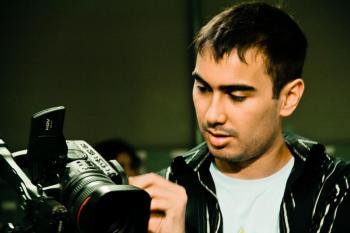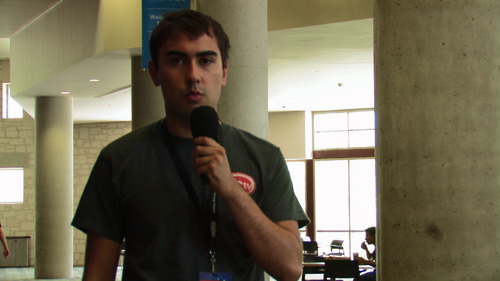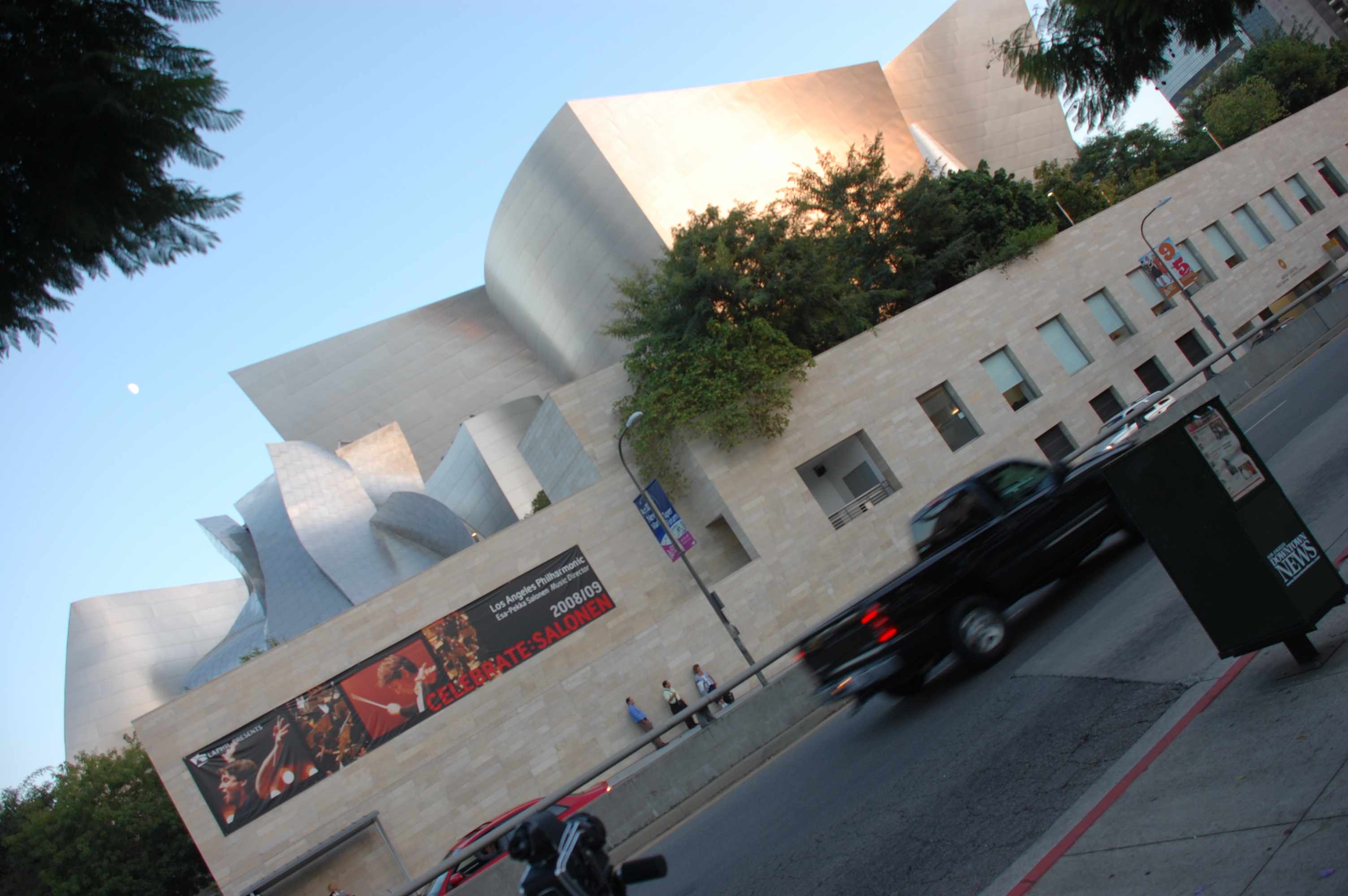What I Learned In LA
 Steven Zurita Posted on
Steven Zurita Posted on  Tuesday, December 11, 2012 at 1:25AM
Tuesday, December 11, 2012 at 1:25AM So I didn't write a blog last week since I was writing a paper to finish up my semester in LA. Since I usually write about what I've learned in this industry, and the paper was about the same thing, why not kill two birds with one stone and check out the paper I wrote?
An entire college semester in Los Angeles can reveal a lot of things. Students can learn where all the celebrities like to party. Maybe they can figure out how to get free tickets to tapings of their favorite TV shows. Or maybe they can learn about all the sights Los Angeles has to offer. But to a film student looking to break into the movie industry, a semester in Los Angeles provides the opportunity to intern at various companies and learn valuable lessons on the business of entertainment. Working in Los Angeles for a few months quickly reveals the importance of making connections in Hollywood to get a job, as well as the age-old adage of working harder then anyone else to get a promotion in said job, and how what they teach in film school actually does apply to the real world!
It sounds like a cliché, but Hollywood definitely works on a system of connections. Applications alone don’t get people jobs; they have to know someone in the business already to get referred to a job. Elissa Malek, who works as a senior vice president’s assistant at Scott Free in the unscripted television department, got her job this way. She interned for Mary Lisio at a now dead production company while she attended UTLA in 2008. Mary Lisio moved to Scott Free, and when Elissa moved back out to Los Angeles in 2010 she called up Mary, whom she had kept in contact with, and got a job as her assistant at Scott Free. With the availability of news on Deadline and Hollywood Reporter, anyone can find an excuse to email an old superior to congratulate them on a new studio deal and remind them of their work as an intern back in the day. That habit keeps you in their mind when they see a job open up. Rachel, the tour guide at Modern Family, has the cliché benefit of knowing family in the entertainment industry. Her uncle had worked at 20th Century Fox for 25 years. When Rachel graduated college in 2010, she called up her uncle for help in working on her favorite show, Modern Family. Sure enough, he was able to pull some strings on the Fox lot and get her a job there as a production assistant. Rachel has since created a new position for herself, which her superiors promoted her to. Getting this kind of information requires a consistent habit of chatting it up with new acquaintances. It doesn’t require a lot of difficulty to get people to start giving out good job advice. Usually asking them about themselves or how they got the job they have now will reveal their own job application procedure and some useful advice they ran into on their own journey. Even strangers in line at a taping of the Late Late Show with Craig Ferguson will spill the beans when using this strategy! So shyness only gets in the way. That forms the initial connection, but making it into a strong one requires some additional work. After a few weeks the superiors at production companies start to notice their interns, starting with the ones they enjoy hanging out with. John Fischer, an executive at Heyday, likes to chat about scripts he and the interns have read. Usually, these conversations extend beyond just commenting on the script’s faults or strengths to fun conversations about cool movies in general. An intern that can make him laugh instantly makes himself favored in his eyes. Of course, the traditional routine of hard work can make any employee stand out in their superior’s eyes in Hollywood.
Many people in Hollywood share stories of how they notice talented, hard working employees and bump them up into a better job. Paul Leonard, the postproduction supervisor for Battlestar Galactica and teacher at UTLA, has one such story. In working on the show, as well as a couple others, he noticed how the editor didn’t know how to do their job. In one situation, he wouldn’t take notes well. In another, he didn’t know how to cut a scene together so that emotion would play fluidly. In both situations Paul noticed a persistent assistant editor who knew how the scene should flow and fired the incompetent editor so the talented assistant could take his place. Becoming this preferred employee at an internship definitely has its perks. Jeffrey Clifford, the president of Heyday Films in Burbank, hand picks interns for his personal errands. Earning his pick for important runs, like driving his brand new car to get its windows tinted, definitely means an intern has stood out in his eyes. Going the extra mile on menial tasks works the same way. Scott Free has its TV interns update an excel file, the cable grid, with updates in TV shows cast and crew lists every week. While the work seems boring, the assistant in charge of the grid, Saagit Scher, likes close attention to detail. Putting in that attention and turning in a flawless cable grid or detailed research document earns a lot of points in her eyes. Superiors like to reward interns who consistently stand out to them with important runs like picking up David Heyman’s personal notebook from Alan Horn’s office at Disney.
Finally, part of experiencing Los Angeles revealed that education through film school and college activities really does apply in the real world. Modern Family, one of the best shows on television, has won numerous awards for its clever writing, and some of its actors have won individual awards as well. A visit to their set in studio 5 on the 20th Century Fox lot reveals that they work the same way as a good student film crew, just with more people and on a bigger stage. They use the same jobs that student films do. Both have gaffers and grips that adjust lighting between shots. Both have the same rules for navigating a hot set too. And even though the actors there earn thousands of dollars per episode, they work just like good actors back at Texas Student Television do. They hit their marks and have the same problems remembering lines. In between takes, they make the same jokes that college level actors do. Working with them looks like working with good actors from film school! Overall, seeing these similarities to film and TV work from college helps to demystify the entire process! It reinforces the idea that film school prepares its students for the real world. And it makes it ok to put faith in education.
The fact that film schools actually have the right idea of what to teach definitely comes as a sigh of relief to graduating seniors. But it takes more then just education to get a job. A couple months interning in Los Angeles show that it usually takes knowing someone already in the business to help refer or hire a graduate for a job. While this does seem biased to lucky people with friends in the industry, making those friends and contacts in the business comes as easy as striking up a conversation and asking them to talk about their job history, and people love talking about how they made it to where they work today! After that point, it takes hard work and dedication to move up the job ladder. Standing out and displaying talent shows employers exactly who deserves the promotion from assistant to editor, or who gets to make the special errand to one of the most important offices at Disney. If only living in four months in Los Angeles can reveal all this, who knows how much more living here permanently will?





